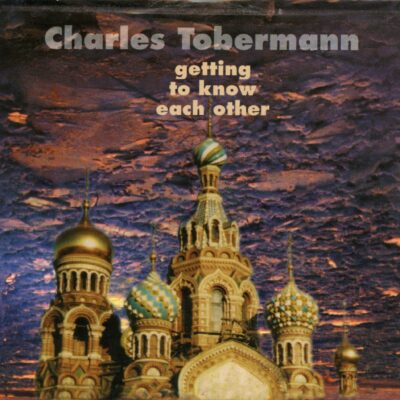November 1, 2021

Getting to Know Each Other
BandCamp (Digital & CD)
Apple Music / iTunes
Amazon (Digital & CD)
YouTube
“Creating and recording these pieces with the tools that were available in the early 1990s was a big challenge and a wonderful learning experience. Re-mastering them and preparing them for 21st century release on streaming platforms was another great learning experience. I’m very pleased that Wild Orchard Records is re-releasing this music in 2022.
“I started creating this music in 1993 and completed the four pieces in 1994. I wanted to make an EP that showed two things: the range of my musical influences and styles, and that it was possible to compose, perform, and record music in a home studio (such as they were at that time) and put it out directly on a CD without going to a commercial studio, hiring other musicians, or having a record company. (If you don’t like the music, then I have to take all the blame, because I wrote it and played it and recorded it and mixed it and prepared it for CD duplication. I did everything. On the other hand, if you like it, I can take much of the credit, along with a nod to all the great teachers who helped along the very long way.) This method may have some difficulties, but it also allowed me to create four pieces of music exactly the way I wanted them, without any external constraints.
“I started working on the project in 1993 when I was working at Apple, and completed and released it in 1994, when I was in one of my periodic “figure out a way to do music full time” career changes. So I proved, to myself at least, that it was possible to record an EP at home. I didn’t yet have an answer to the question of what to do when the delivery person showed up with a big cardboard box of CDs, there being no streaming services, no online shopping, and Internet marketing was embryonic. I learned a lot about the music industry of that time through trying to find distribution for an independent CD. It was too avant-garde for many, not avant-garde enough for a few.
“A word about the diversity of musical styles and types and influences: part of the objective of the project was to show a range of possibilities, and part of the motivation was simply a result of my long-standing interest in classical music, jazz, rock, blues, and music from all over the world. I wanted each piece to show different facets of how those things might fit together in unexpected ways.
1. Soleil d’hiver
I was in the train from Cannes to Paris, returning to rainy Paris in January from a sunny escape to Cannes for the MIDEM music industry convention, rolling along the coast and looking out at the Mediterranean and I “heard” this music in my head. When I got home to Paris, I quickly created and recorded it. In addition to Indian music, it also draws on techniques of layering multiple musical meters found in contemporary classical music (composers like Elliott Carter), and also nods to some of the pop/world sounds that were coming out of Peter Gabriel’s Real World Records.
2. Cantata
A journalist asked me to describe the style of this piece and my un-premeditated reply was, “Pérotin and Stravinsky are walking down the street and they run into Steve Reich, Astor Piazzolla, Carl Orff, and they all go for coffee!” After moving to France in 1991, I developed a much greater interest in medieval music than before, probably due to the immediate proximity of such iconic places related to it, like Notre Dame. The Hilliard Ensemble’s recording of Pérotin’s early polyphony (early 13th century) had come out around then I it made a great impression on me. I tried to create something that linked that sound world to the orchestral sound world of the early 20th century, such as was possible with the still rather limited tools of the day.
3. Danse africaine
The idea for this piece came from a colleague at Apple from Ghana who was in an African dance troop. I never saw them, but the imagined scene inspired me to create this music, not trying to imitate African music, about which my knowledge was limited, but to reference it, for example emulating the way in which the leader of a group like the Master Drummers of Burundi introduces tempo changes and the way in which rhythms are layered to create polyrhythmic counterpoint, all underpinning a rather simple modal melody.
4. Getting to Know Each Other
This was the first of the pieces to be conceived and created. It followed the fall of the Berlin Wall and the dissolution of the Soviet Union. It was a reflection on the Cold War and the waste of all the efforts on both sides through those long and stressful decades in which Mutual Assured Destruction was only a button-push away. At a time in which many in the West were talking about having “won” the Cold War, and crowing a bit, I wanted this piece to be the opposite, the extension of a hand of friendship to the people of the countries of the former Soviet Union and Warsaw Pact, and a rather somber meditation on the costs, human and economic of the Cold War that could have been put to better use solving some of humanity’s other problems. Musically the piece mixes the techniques of musique concrète (the use of pre-recorded sounds to create music instead of notes, then newly more efficiently possible using the first digital samplers) and music influenced by medieval and Renaissance counterpoint, but clothed in the timbres for a synthesized ensemble of something like string instruments.”